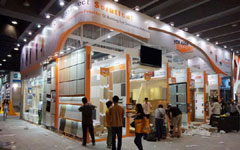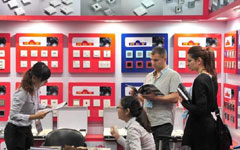To that end, she said the firm is busily diverting its focus from switches, whose gross profit barely hits one yuan each, to the more lucrative LED lighting segment.
"Competition in basic machinery has been fierce, notably in the past two years, between China and India," he said. "I will look to buy from India since (its products are) almost half the price of Chinese ones."
|
 |
|
 |
"When they hear 'made in Korea', merchants don't even bother to bargain for a price. They take it as a guarantee for quality, and that's the edge we have over Chinese companies," Ku said.
Such a dilemma is pushing Chinese exporters to put down roots overseas rather than just rely on exports, said Chen Qiuru, deputy general manager of the China Foreign Trade Center.
"China-based companies will seek wider profit margins built on their ability to sell desirable, high-specification products rather than simply offering the best value for the money," Chen said.
From the standpoint of individual companies, the basic lesson is clear: Don't be complacent, said Dan Steinbock, research director of international business at the US-based India, China and America Institute.
But such ambition is being constrained by a lack of core competence or new technology, the Achilles' heel facing almost every small and medium-sized enterprise.
"It's easy to come up with the slogan 'move up the value chain', but how much cost can SMEs bear before we can acquire world-class technologies?" asked Xu Xudong, manager of Nanjing Technology Import and Export Co Ltd.
Other Asian countries can offer many success stories for China to learn from, Steinbock noted.
"But it has gone hand in hand with substantial economic, political and social changes. In each case, established interests have sought to fight or slow down reforms, but at the end of the day, the most competitive and innovative companies have prevailed, which, in turn, has benefited the consumers," he said.
